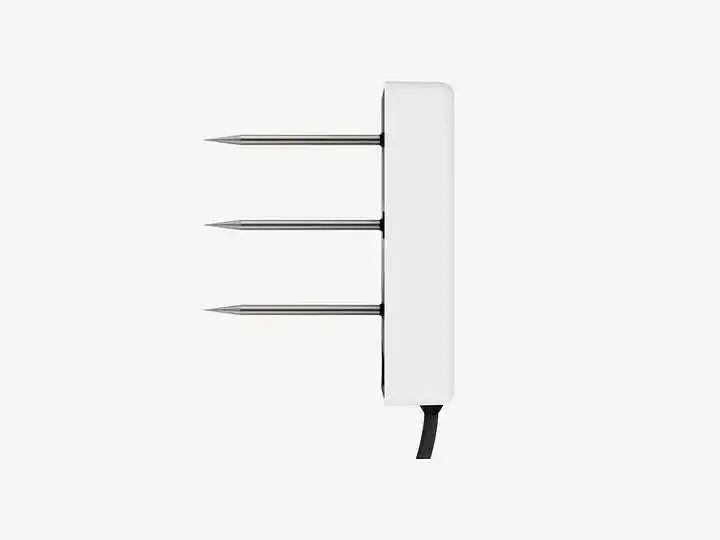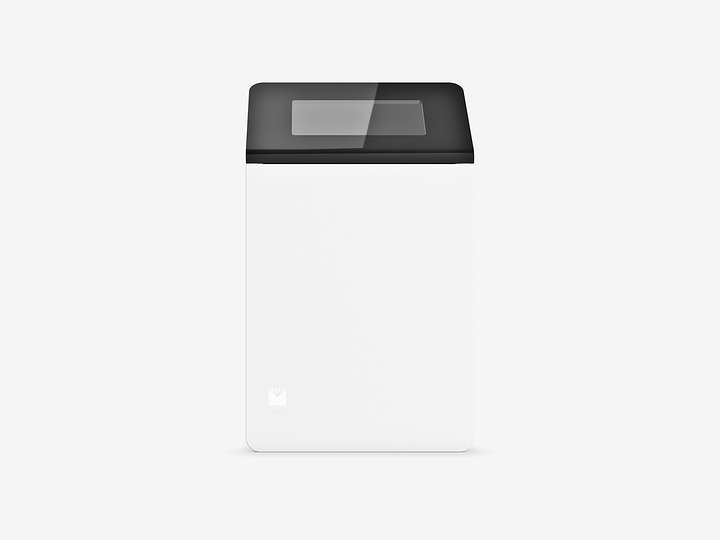Using soil water sensors for efficient irrigation in greenhouses

MARC VAN IERSEL AND STEPHANIE BURNETT
UNIVERSITY OF GEORGIA
Manual irrigation is labor-intensive and repetitive, so it is one of the first greenhouse tasks that should be automated. Although automating irrigation is easy, automated systems are not necessarily water efficient. Many growers use timers to control irrigation, but timers do not account for day-to-day changes in plant water use caused by natural fluctuations in temperature, light, and humidity levels. In addition, plant water use increases as plants grow. This makes it difficult to obtain efficient irrigation using a timer. Given the increasing strain on water resources in many parts of North America, the greenhouse industry needs to move towards more efficient irrigation systems.
Soil water sensors provide promising new opportunities for automating greenhouse irrigation according to plant need. We have worked extensively with EC-5 probes, which are small enough to fit into a 4” pot, and have found that these probes accurately measure the volumetric water content of soilless substrates. We have integrated EC-5 probes into an automated irrigation system that makes it possible to irrigate plants based on actual plant water use.
Sensors ensure plants never experience drought stress
The basic idea behind using soil water sensors to control irrigation is simple: when plants use water, they take it up from the substrate, so the water content of the substrate decreases. Soil water sensors detect these changes and can be used to open an irrigation valve when the substrate water content drops below a user-determined set-point. This results in frequent applications of small amounts of water, and the frequency of irrigation is adjusted automatically based on the rate of substrate water depletion. This irrigation approach automatically replaces water that is used by plants or lost through evaporation and assures that plants are never exposed to drought stress. By irrigating with the amount of water actually needed by the plants, water use and leaching can be reduced greatly. This minimizes pollution without using expensive recycling irrigation systems or large ponds to capture runoff.
Does it really work?
To test this irrigation approach and to determine how much water petunias need for good growth, we grew them at substrate water levels ranging from 5 to 40%. Irrigation was controlled with EC-5 probes in the substrate, which were connected to a data logger. For the first nine days after transplanting seedlings, all substrates were kept well-watered to allow the plants to establish. Afterwards, our irrigation system maintained substrate water content (treatments ranging from 5 to 40%) for 20 days, and then plants were harvested.
Our irrigation system performed very well throughout the entire study (Figure 1). As soon as the substrate water content in a particular container had dried out to the irrigation set point, our automated irrigation system started irrigating that tray. The water content of the substrate generally was kept slightly above the set point.
A higher substrate water set point for irrigation resulted in more frequent waterings. Although the irrigation quantity increased with increasing substrate water levels, there was no leaching in any of the treatments. Even the largest plant received only 650 mL (about 21 fl. oz.) of water during the last 20 days of the experiment. Daily water use in the treatment with the highest water use ranged from only 15 to 20 mL/plant/day (just over one tablespoon!) when the plants were small to 45 mL/plant/day (3 tablespoons) at the end of the experiment.

Plant growth increased with increasing substrate water content, but there was little difference between the 25, 30, 35, and 40% treatments (Figure 2 left, 3). Since plant growth was highly correlated with the amount of water the plants received (Figure 2 right), controlling irrigation based on substrate water content may be a feasible method for controlling growth of rapidly elongating plants.

How can growers use this?
Several brands of greenhouse control systems can measure EC-5 probes and could be used to automate irrigation based on these measurements. Growers should check with the manufacturer of their control system to see if it can measure these probes. For growers who prefer a stand-alone controller, we have collaborated with Brower Electronics Laboratories (Pittsboro, NC) to develop a controller that can irrigate plants when the substrate water content drops below a grower-determined set point. This controller also allows growers to set irrigation duration and a minimum time period between subsequent irrigations.
Growers who are not ready to turn over irrigation to soil water probes could get valuable information about plant water needs by using EC-5 probes with a handheld meter or data logger from METER. The handheld meter allows growers to place sensors in some of their pots and to periodically measure the water content of the substrate. A data logger can send data wirelessly to your computer which allows you to monitor changes in substrate water content in real-time through graphical displays. Using this technology would give growers a much better idea of how much water plants need and will help in making better irrigation decisions.
Improve plant quality
It appears that in the near future growers may automate irrigation using sensors to water plants efficiently and improve plant quality. The technology is currently available, and guidelines for its use are being developed. But, what’s next? In the future, we wish to gain a better grasp of how water use changes depending on the location of a crop in the greenhouse (for example, proximity to cooling pads or fans), the number of plants grown, and environmental factors. An exciting new development is that the newer 5TE probes can measure both substrate EC and water content. This may allow growers to control both irrigation and fertilization simultaneously.
Marc van Iersel is a professor in floriculture at the University of Georgia ([email protected]). For more information, please visit Marc van Iersel’s irrigation automation website: www.hortphys. uga.edu/irrigationcontrol.html
Stephanie Burnett is an assistant professor in floriculture at the University of Maine; [email protected]
We gratefully acknowledge the Fred C. Gloeckner Foundation for funding our research.
Learn the basics of measuring soil moisture
Soil moisture is more than just knowing the amount of water in soil. Learn basic principles you need to know before deciding how to measure it. In this 20-minute webinar, discover:
- Why soil moisture is more than just an amount
- Water content: what it is, how it’s measured, and why you need it
- Water potential: what it is, how it’s different from water content, and why you need it
- Whether you should measure water content, water potential, or both
- Which sensors measure each type of parameter

Case studies, webinars, and articles you’ll love
Receive the latest content on a regular basis.


